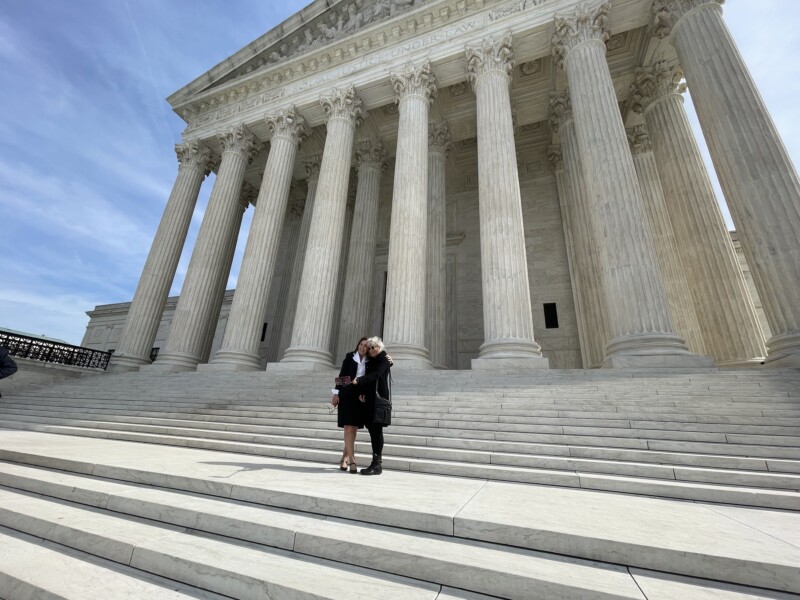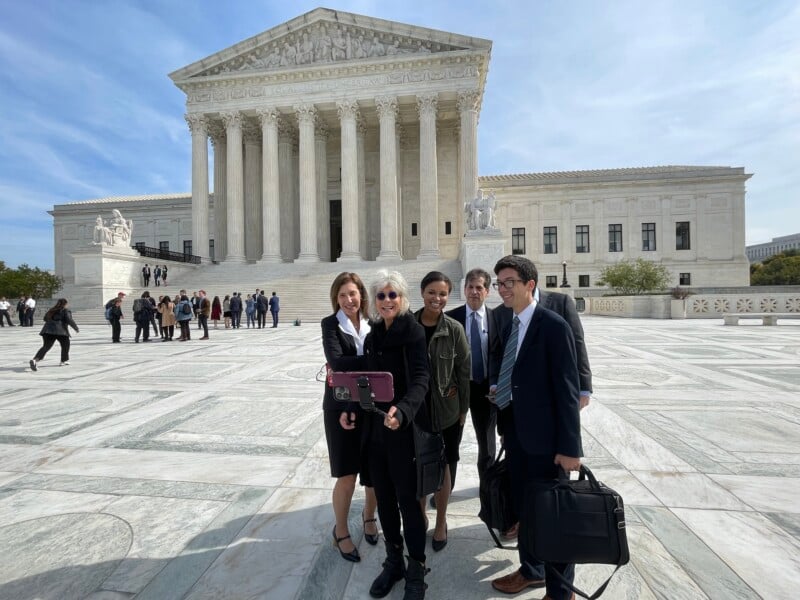[ comments ]
![]()
The United States Supreme Court has released its opinion on The Andy Warhol Foundation v. Goldsmith case, finding in favor of Lynn Goldsmith and stating that Warhol’s use of her photo was not fair use.
For those unfamiliar, the Warhol v. Goldsmith case has been ongoing for several years and involves photographer Lynn Goldsmith’s photo of Prince and Andy Warhol’s use of that photo which his Foundation argues was fair use.
The details of the case to this point can be read in prior coverage, but in summary, Goldsmith had been victorious in the most recent court’s decision leading up to this point. The Andy Warhol Foundation had appealed the decision to the Supreme Court, who has affirmed the lower court’s decision and sealed Goldsmith’s win.

In an 87-page, seven-to-two opinion written by Justice Sotomayor, the Supreme Court has ruled that Warhol’s use of Goldsmith’s Prince photo was not transformative enough to warrant fair use and was instead a violation of her copyright. Justices Roberts and Kagan dissented.
“Although new expression, meaning, or message may be relevant to whether a copying use has a sufficiently distinct purpose or character, it is not, without more, dispositive of the first factor,” the court holds.
“The ‘purpose and character’ of Andy Warhol Foundation’s (AWF) use of Goldsmith’s photograph in commercially licensing Orange Prince to Condé Nast does not favor AWF’s fair use defense to copyright infringement.”
The opinion continues:
“AWF contends that the Prince Series works are ‘transformative,’ and that the first fair use factor thus weighs in AWF’s favor, because the works convey a different meaning or message than the photograph. But the first fair use factor instead focuses on whether an allegedly infringing use has a further purpose or different character, which is a matter of degree, and the degree of difference must be weighed against other considerations, like commercialism.
“Although new expression, meaning, or message may be relevant to whether a copying use has a sufficiently distinct purpose or character, it is not, without more, dispositive of the first factor. Here, the specific use of Goldsmith’s photograph alleged to infringe her copyright is AWF’s licensing of Orange Prince to Condé Nast. As portraits of Prince used to depict Prince in magazine stories about Prince, the original photograph and AWF’s copying use of it share substantially the same purpose. Moreover, AWF’s use is of a commercial nature. Even though Orange Prince adds new expression to Goldsmith’s photograph, in the context of the challenged use, the first fair use factor still favors Goldsmith.”
As noted by the American Society of Media Photographers (ASMP), while the opinion is lengthy and is still being analyzed, it is clear that “in large measure Goldsmith prevailed and this holding is a restraint on ‘fair use’ as a defense to the type of infringement seen in this case.”
Breaking Down the Ruling
Both the National Press Photographers Association (NPPA) and the ASMP are celebrating the ruling as a win for photographers.
“The importance here cannot be overstated,” Thomas Maddrey, Chief Legal Officer and Head of National Content and Education at ASMP, says.
“The last case that the US Supreme Court fully opined on transformation and fair use was more than 25 years ago in Campbell v. Acuff-Rose. Here, the Court has added much needed guidance to when a use is truly ‘fair’ and when it is an impermissible usurpation of the rights of the copyright holder.”

Maddrey says that the case will likely have wide-ranging implications in not only the arts community, but also across all intellectual property areas.
“Copyright practitioners have long sought clarification on what “transformation” actually means in the context of a fair use analysis.”
The court has clearly identified the boundaries of what constitutes transformation in the context of fair use analysis.
“AWF wanted to say that any use that gives the underlying work new message, meaning, or expression is transformation, the Court held that is not the case; other factors must be considered at this stage as well,” Maddrey continues.
“The Court here uses unambiguous language to eliminate an oft-used point raised in fair use analysis. Simply adding ‘some new expression, meaning or message’ does NOT, in and of itself, create a transformational use. Period. The fact that the Court fully understood the impact on photography that the interpretation AWF was taking would have is vital. If all that it took to be considered fair use is that there was some degree of difference in expression, meaning, or message, then it would be open season on photographs for all sorts of purposes,” he explains.

“No more needs to be said. This is what groups like ASMP and photographers have been saying since the beginning of this matter. And now the Supreme Court has heard all arguments and rendered their opinion. And their opinion is in support of Goldsmith’s right to create and make a living in her profession.”
“Given that the NPPA was one of the amici in this extremely important case we are very pleased with the Supreme Court’s decisive 7-2 ruling addressing the contours of fair use,” Mickey H. Osterreicher, General Councel for the NPPA tells PetaPixel.
“Unfortunately, the exponential growth of fair use as a defense to copyright has turned copyright protection of photographs on its head where the exception had almost subsumed the rule. Hopefully this opinion will now cause those who believe that images are free for the taking to reconsider their position and seek to obtain permission from the photographer, along with a proper license, credit, and fair compensation. We are very grateful to all of those who supported our efforts to address this problem, especially Lynn Goldsmith, her legal team and those organizations who joined along with ASMP in our amicus brief.”
Update 5/28: Added context and explanations from the ASMP and NPPA.
[ comments ]

